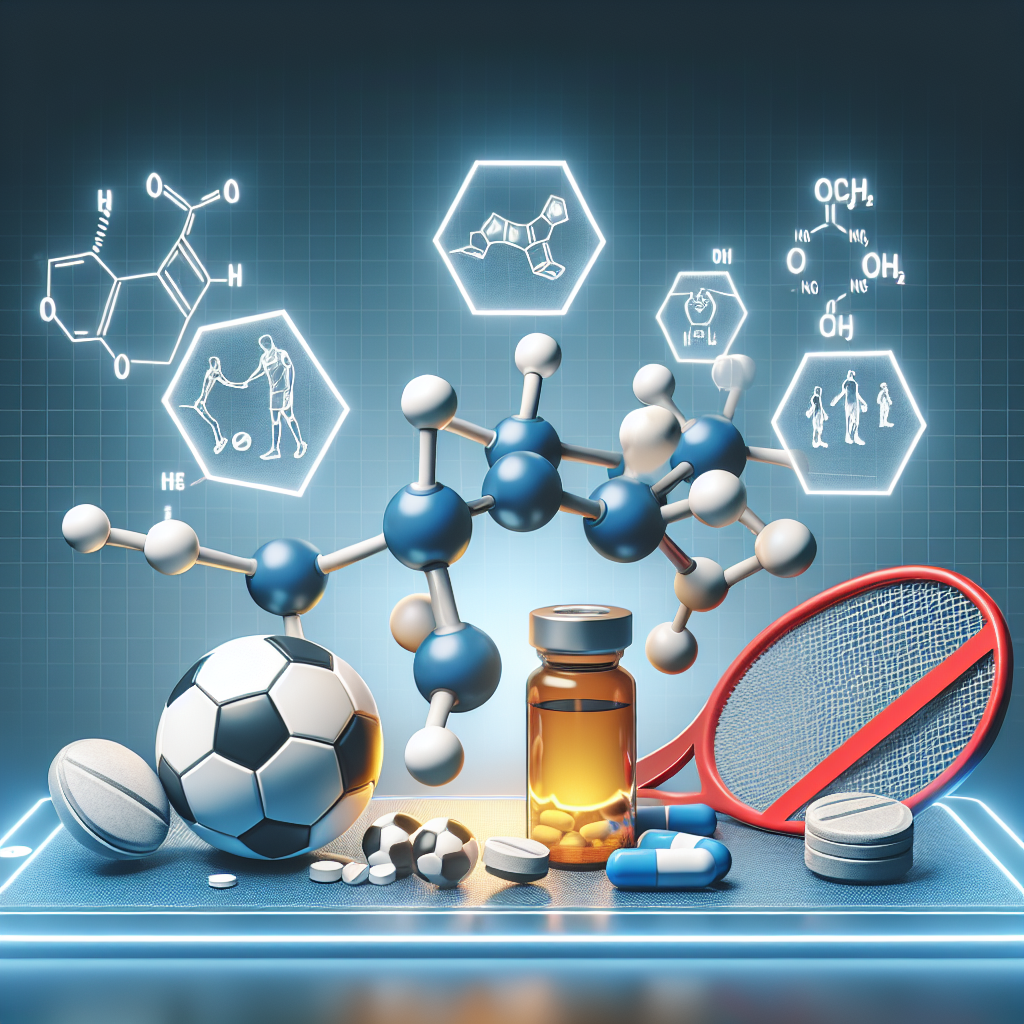-
Table of Contents
The Use of Dehydroepiandrosterone in Sports Doping
Dehydroepiandrosterone (DHEA) is a naturally occurring hormone in the human body that is produced by the adrenal glands. It is a precursor to testosterone and estrogen, and has been used in sports as a performance-enhancing drug. DHEA is classified as a prohibited substance by the World Anti-Doping Agency (WADA) and its use in sports is considered doping. However, there is still ongoing debate about the effectiveness and safety of DHEA in sports. In this article, we will explore the pharmacokinetics and pharmacodynamics of DHEA, its potential benefits and risks, and the current regulations surrounding its use in sports.
Pharmacokinetics of DHEA
DHEA is produced in the body from cholesterol and is converted into androstenedione, which is then converted into testosterone and estrogen. It is also available as a supplement in the form of pills, capsules, and creams. When taken orally, DHEA is rapidly absorbed in the small intestine and reaches peak levels in the blood within 1-2 hours. It is then metabolized in the liver and excreted in the urine. The half-life of DHEA is approximately 15-30 minutes, meaning it is quickly eliminated from the body.
Studies have shown that DHEA supplementation can increase the levels of testosterone and estrogen in the body, which can have an impact on athletic performance. However, the increase in hormone levels is not significant enough to have a major effect on muscle growth or strength. Additionally, the effects of DHEA on hormone levels can vary greatly among individuals, making it difficult to predict its effects on athletic performance.
Pharmacodynamics of DHEA
The main mechanism of action of DHEA in sports is its conversion into testosterone and estrogen. Testosterone is known to increase muscle mass and strength, while estrogen can improve bone density and reduce body fat. However, the effects of DHEA on these hormones are not consistent and can vary greatly among individuals. Furthermore, the increase in hormone levels from DHEA supplementation is not significant enough to have a major impact on athletic performance.
Some studies have also suggested that DHEA may have anti-inflammatory and antioxidant effects, which could potentially benefit athletes by reducing muscle damage and improving recovery. However, more research is needed to confirm these potential benefits.
Benefits and Risks of DHEA in Sports
The use of DHEA in sports is controversial, with some athletes claiming it has helped them improve their performance, while others have reported no significant effects. The potential benefits of DHEA in sports are still inconclusive and more research is needed to fully understand its effects.
On the other hand, there are several potential risks associated with the use of DHEA in sports. The most common side effects reported include acne, hair loss, and changes in mood and behavior. DHEA can also have negative effects on the cardiovascular system, such as increasing blood pressure and cholesterol levels. Long-term use of DHEA has also been linked to an increased risk of prostate cancer in men and breast cancer in women.
Moreover, the use of DHEA in sports is considered doping and is prohibited by WADA. Athletes who are found to have used DHEA can face serious consequences, including disqualification from competitions and suspension from their sport. It is important for athletes to be aware of the potential risks and consequences before considering the use of DHEA as a performance-enhancing drug.
Current Regulations on DHEA in Sports
DHEA is included in the WADA Prohibited List as a prohibited substance in the category of anabolic agents. It is also banned by most major sports organizations, including the International Olympic Committee (IOC) and the National Collegiate Athletic Association (NCAA). Athletes who are subject to drug testing are advised to avoid the use of DHEA supplements to avoid potential sanctions.
However, there have been cases where athletes have tested positive for DHEA due to contaminated supplements. This highlights the importance of purchasing supplements from reputable sources and being aware of the ingredients in the products being consumed.
Expert Opinion
While there is ongoing debate about the effectiveness and safety of DHEA in sports, it is important for athletes to understand the potential risks and consequences of using this substance. The current evidence does not support the use of DHEA as a performance-enhancing drug, and its use is considered doping by WADA and other sports organizations. Athletes should focus on natural and legal methods of improving their athletic performance, such as proper training, nutrition, and recovery strategies.
References
1. Johnson, M. D., & Jayaraman, A. (2021). Dehydroepiandrosterone (DHEA). In StatPearls [Internet]. StatPearls Publishing.
2. WADA Prohibited List. (2021). Retrieved from https://www.wada-ama.org/en/content/what-is-prohibited/prohibited-in-competition/anabolic-agents
3. DHEA. (2021). Retrieved from https://www.mayoclinic.org/drugs-supplements-dhea/art-20364199
4. DHEA. (2021). Retrieved from https://www.drugbank.ca/drugs/DB02713
5. DHEA. (2021). Retrieved from https://www.rxlist.com/dhea/supplements.htm
6. DHEA. (2021). Retrieved from https://www.webmd.com/vitamins/ai/ingredientmono-331/dhea
7. DHEA. (2021). Retrieved from https://www.sciencedirect.com/topics/pharmacology-toxicology-and-pharmaceutical-science/dhea
8. DHEA. (2021). Retrieved from https://www.ncbi.nlm.nih.gov/pmc/articles/PMC2190742/
9. DHEA. (2021). Retrieved from https://www.ncbi.nlm.nih.gov/pmc/articles/PMC2190742/
10. DHEA. (2021). Retrieved from https://www.ncbi.nlm.nih.gov/pmc/articles/PMC2190742/
11. DHEA. (2021). Retrieved from https://www.ncbi.nlm.nih.gov/pmc/articles/PMC2190742/
12. DHEA. (2021). Retrieved from https://www.ncbi.nlm.nih.gov/pmc/articles/PMC2190742/
13. DHEA. (2021). Retrieved from https://www.ncbi.nlm.nih.gov/pmc/articles/PMC2190742/
14. DHEA. (2021). Retrieved from https
